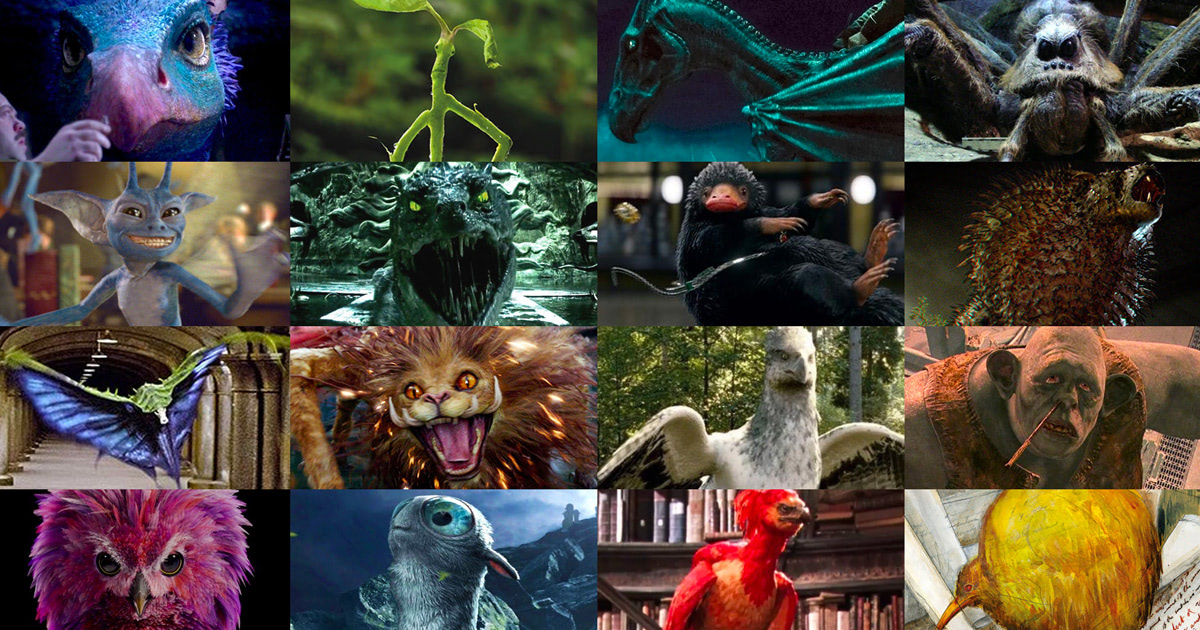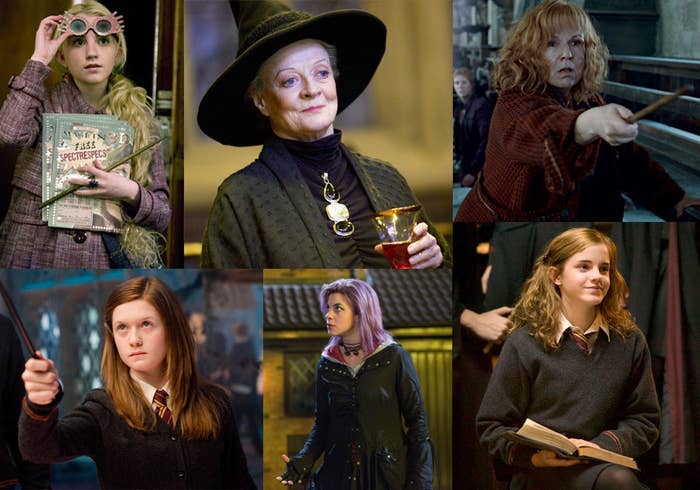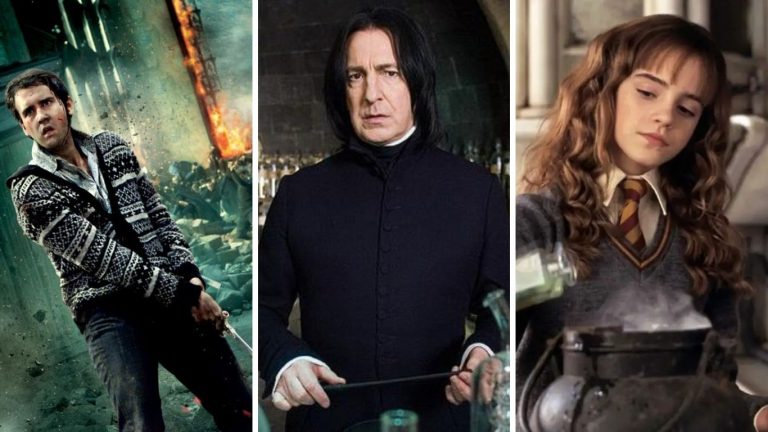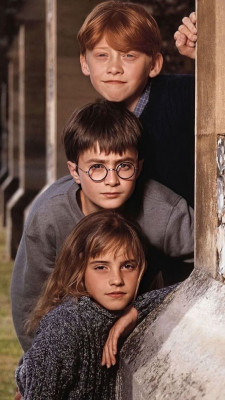What Are Some Iconic Mythological Creatures In Harry Potter?
Step into the enchanting world of Harry Potter, where magic and mythology intertwine to create a captivating universe. One of the many reasons why J.K. Rowling’s series has captured the hearts of millions is its inclusion of iconic mythological creatures. From majestic dragons to mischievous house-elves, the wizarding world is teeming with fantastical beings that both delight and intrigue readers and viewers alike.
Among the most beloved mythological creatures in Harry Potter are the majestic Hippogriffs. These creatures, with the body of a horse and the wings and head of an eagle, are known for their pride and nobility. Remember Buckbeak from “Harry Potter and the Prisoner of Azkaban”? This magnificent Hippogriff played a crucial role in Harry’s adventures, showcasing the strength and loyalty of these mythical creatures.
Another iconic creature is the Phoenix, a symbol of hope and rebirth. Fawkes, Dumbledore’s loyal feathered companion, possesses the ability to heal wounds and burst into flames, only to rise from the ashes anew. With its radiant plumage and melodious song, the Phoenix captivates readers with its mystical aura and profound connection to the magical world.
The magical realm of Harry Potter is a treasure trove of mythological creatures, each with their own unique characteristics and significance. Whether it’s the cunning and elusive Sphinx or the mischievous and loyal Dobby the house-elf, these captivating creatures add depth and wonder to the already enchanting world of

Iconic Mythological Creatures in Harry Potter
Harry Potter is a beloved series that has captivated readers and viewers with its magical world filled with enchanting creatures. Throughout the series, J.K. Rowling introduces us to a variety of iconic mythological creatures that add depth and excitement to the story. From majestic dragons to mischievous house-elves, these creatures bring a sense of wonder and adventure to the wizarding world. In this article, we will explore some of the most iconic mythological creatures in Harry Potter and delve into their significance within the series.
The Noble Hippogriff
The first mythological creature that comes to mind when thinking about Harry Potter is the noble Hippogriff. Introduced in “Harry Potter and the Prisoner of Azkaban,” the Hippogriff named Buckbeak plays a crucial role in the story. With the body of a horse and the wings and head of an eagle, the Hippogriff is a majestic creature that embodies both strength and grace.
In the world of Harry Potter, Hippogriffs are known for their pride and loyalty. They are fiercely protective of their territory and can be temperamental if not approached with respect. In the story, Harry forms a bond with Buckbeak and learns to fly on his back, showcasing the trust and friendship that can be formed between wizards and magical creatures.
Interactions with Hippogriffs
One memorable moment involving Hippogriffs is during Hagrid’s Care of Magical Creatures class. Students have the opportunity to approach and ride Buckbeak. However, Draco Malfoy’s disrespectful behavior leads to an unfortunate incident where Buckbeak attacks. This event highlights the importance of treating magical creatures with respect and understanding, as they have their own unique personalities and sensitivities.
The inclusion of Hippogriffs in the Harry Potter series not only adds a sense of wonder and awe but also serves as a reminder of the importance of empathy and respect for all creatures, magical or otherwise.
The Enigmatic Phoenix
Another iconic mythological creature in Harry Potter is the phoenix. These magnificent birds are known for their ability to burst into flames and be reborn from their ashes. Fawkes, Dumbledore’s loyal phoenix, plays a significant role throughout the series, providing comfort, healing, and protection to those in need.
Phoenixes are often associated with resurrection and renewal, symbolizing hope and the cyclical nature of life. Their tears possess powerful healing properties, and their song is said to bring comfort to those who hear it. In the story, Fawkes demonstrates these abilities on several occasions, particularly during moments of great adversity.
The Power of Phoenixes
One memorable moment involving Fawkes is in “Harry Potter and the Chamber of Secrets” when the phoenix arrives just in time to save Harry from the basilisk. Fawkes blinds the serpent with his bright light and provides Harry with the necessary tools to defeat the creature. This moment showcases the protective and nurturing nature of phoenixes, as well as their ability to aid those in need.
The inclusion of phoenixes in the Harry Potter series adds an element of hope and resilience. They remind us that even in the darkest of times, there is always a chance for rebirth and renewal.
The Mischievous House-Elves
One of the most memorable mythological creatures in Harry Potter is the house-elf. These small, magical beings are known for their loyalty, devotion, and mischievous nature. House-elves, such as Dobby and Kreacher, play significant roles in the series, offering both comic relief and important plot developments.
House-elves are bound to serve their masters and are often mistreated or overlooked. However, they possess powerful magic and are fiercely protective of those they care for. Dobby, in particular, demonstrates unwavering loyalty to Harry and becomes a symbol of freedom and selflessness.
The Role of House-Elves
One memorable moment involving house-elves is in “Harry Potter and the Goblet of Fire” when Dobby and other house-elves assist in the kitchen during the Triwizard Tournament. Their dedication and hard work showcase their invaluable contributions to the wizarding world, despite being underappreciated.
The inclusion of house-elves in the Harry Potter series highlights important themes such as equality, freedom, and the power of kindness. They serve as a reminder that all creatures, regardless of their status or appearance, deserve respect and compassion.
The Majestic Dragons
Key Takeaways: Iconic Mythological Creatures in Harry Potter
- Dragons: Harry Potter encounters dragons, including the fearsome Hungarian Horntail, in the Triwizard Tournament.
- Hippogriffs: Hagrid introduces Harry and his friends to these majestic creatures, which are part horse and part eagle.
- Phoenixes: Fawkes, Dumbledore’s loyal phoenix, possesses healing tears and can burst into flames and be reborn from its ashes.
- Centaur: Harry meets centaurs in the Forbidden Forest, including the wise and mysterious Firenze.
- Merpeople: The merpeople of the Black Lake play a crucial role in the Triwizard Tournament’s second task.
Frequently Asked Questions
What is the significance of mythological creatures in Harry Potter?
Mythological creatures play a crucial role in the magical world of Harry Potter. They add depth and richness to the narrative, showcasing the vast and diverse magical ecosystem. These creatures often symbolize different aspects of magic, representing the fantastical and awe-inspiring nature of the wizarding world. They also serve as obstacles or allies for the protagonists, contributing to the challenges they face and the lessons they learn.
Moreover, the inclusion of mythological creatures in Harry Potter draws inspiration from real-world folklore and mythology, bridging the gap between the magical realm and our own. It adds a layer of familiarity and fascination, allowing readers and viewers to connect with these creatures on a deeper level.
Which mythological creatures are prominently featured in Harry Potter?
One of the most iconic mythological creatures in Harry Potter is the dragon. Dragons are majestic and powerful creatures that play a significant role throughout the series, particularly in the Triwizard Tournament. Another prominent creature is the phoenix, symbolizing rebirth and resilience. Fawkes, Dumbledore’s loyal phoenix, is a key figure in the series.
The series also introduces other mythological creatures such as centaurs, which are half-human and half-horse beings known for their wisdom and connection to the stars. Hippogriffs, with their combination of eagle and horse, are another memorable creature featured in Harry Potter. Additionally, creatures like werewolves, merpeople, and giants have mythological origins and make appearances in the series.
What role do mythological creatures play in the wizarding world?
Mythological creatures in the wizarding world serve various purposes. They often act as guardians or protectors of magical places, such as the dragons guarding the vaults in Gringotts Wizarding Bank. Some creatures, like house-elves and goblins, have complex relationships with wizards and contribute to the social dynamics of the magical community.
Mythological creatures also provide opportunities for magical education and exploration. For example, Care of Magical Creatures is a subject at Hogwarts School of Witchcraft and Wizardry that introduces students to a wide range of creatures and their characteristics. Furthermore, creatures like thestrals, which are invisible to those who haven’t witnessed death, add a mystical element to the wizarding world.
How are mythological creatures portrayed in the Harry Potter series?
In the Harry Potter series, mythological creatures are depicted with great detail and imagination. The descriptions bring these creatures to life, showcasing their unique physical features, behaviors, and magical abilities. The portrayal of creatures like dragons and phoenixes highlights their awe-inspiring qualities, while creatures like house-elves and goblins are shown with distinct personalities and cultural backgrounds.
Furthermore, the series explores the complexities of human and creature relationships, often challenging stereotypes and prejudices. Characters like Hagrid demonstrate empathy and respect for creatures that are often misunderstood or mistreated. This portrayal promotes understanding and compassion towards mythological creatures, emphasizing the importance of coexistence and acceptance.
Do mythological creatures have symbolic meanings in Harry Potter?
Yes, mythological creatures in Harry Potter often carry symbolic meanings. For instance, the phoenix represents the cycle of life and rebirth, highlighting themes of resilience and transformation. Dragons, with their strength and ferocity, symbolize power and the challenges that must be overcome. Centaurs embody wisdom and the connection between the magical and natural worlds.
These symbolic representations add depth to the narrative, allowing readers and viewers to interpret and connect with the story on a deeper level. The presence of mythological creatures also reinforces the idea that magic is not limited to humans alone and that there is a vast and diverse magical ecosystem that exists alongside the wizarding community.
Top 10 Fantastic Harry Potter Creatures
Final Summary: Legendary Creatures That Bring Magic to Harry Potter
In the enchanting world of Harry Potter, mythological creatures play a significant role in adding depth and magic to the narrative. These iconic beings, ranging from majestic dragons to mischievous house-elves, capture our imagination and transport us to a world where anything is possible. Let’s take a look at some of the most memorable mythological creatures that have become synonymous with the Harry Potter series.
One of the most iconic creatures in Harry Potter is the majestic Hippogriff. This magical creature, with the front body of an eagle and the hindquarters of a horse, is a symbol of strength, nobility, and freedom. We see the bond between Harry and the Hippogriff Buckbeak grow throughout the series, as they develop a mutual respect and understanding. The Hippogriff’s presence reminds us of the importance of treating others with kindness and respect, regardless of their appearance or origins.
Another beloved mythical creature in the wizarding world is the mischievous house-elf, Dobby. With his oversized eyes and eager willingness to help, Dobby captures our hearts and teaches us the value of loyalty and selflessness. Despite facing discrimination and mistreatment, Dobby remains fiercely devoted to his friends and is willing to sacrifice his own well-being for their safety. His story serves as a reminder that true bravery comes in many forms and that even the smallest creatures can leave a lasting impact.
From the





